- Explore the Enchanting World of Cosmea Flowers
- The Alluring Appearance
- A Symbol of Love and Freedom
- Easy to Grow and Care For
- Attracting Birds, Bees, and Butterflies
- A Versatile Addition to Any Garden
- Conclusion
- Delight in the Vibrant Colors and Unique Shapes
- A Color Palette to Suit Every Taste
- A Garden Full of Shapes and Textures
- Conclusion
- Experience the Fragrance of these Alluring Blooms
- How to Enjoy the Fragrance of Cosmea Flowers
- Uncover the Secrets of Growing Cosmea in Your Garden
- 1. Choose the Right Location
- 2. Prepare the Soil
- 3. Sow the Seeds
- 4. Watering
- 5. Fertilizing
- 6. Support and Deadheading
- 7. Pests and Diseases
- Learn the Ideal Soil Conditions and Light Requirements
- Soil Conditions
- Light Requirements
- Discover the Best Time to Plant and Harvest Cosmea
- Planting Cosmea Seeds
- Harvesting Cosmea
- Create a Stunning Garden with Cosmea as a Focal Point
- Choose the Perfect Location
- Prepare the Soil
- Plant Cosmea Seeds
- Maintain and Care for Cosmea
- Enjoy the Beautiful Blooms
- Combine Cosmea with Other Complementary Flowers
- Use Cosmea as a Border or Filler for a Prettier Landscape
- Creating a Border with Cosmea
- Using Cosmea as a Filler
- Questions and Answers:
- What is cosmea?
- Where can I find cosmea?
- How do I grow cosmea?
- When does cosmea bloom?
- Can cosmea attract pollinators?
- Are there different varieties of cosmea?
- Can I use cosmea as a cut flower?
- Videos: Unlocking a Collector’s Paradise: Take a Virtual Garden Tour!
Welcome to our guide on the enchanting world of Cosmea! If you are a nature lover who appreciates the beauty of vibrant flowers and stunning landscapes, then you are in for a treat. In this article, we will take you on a journey through the mesmerizing world of Cosmea, also known as the Cosmos flower.
Cosmea is a genus of flowering plants that belongs to the Asteraceae family. These radiant flowers are native to North and South America, and their name originates from the Greek word “kosmos,” which translates to “harmony” or “beautiful.” True to their name, these flowers are renowned for their breathtaking beauty and ability to transform any garden into a picturesque paradise.
One of the most striking features of Cosmea is their vibrant color palette. From soft pastels to rich and intense hues, these flowers come in a wide range of shades, including pink, white, purple, and even orange. Furthermore, their delicate petals are often adorned with intricate patterns and unique markings, adding to their allure.
Not only are Cosmea visually captivating, but they are also incredibly easy to grow and care for, making them a popular choice among both amateur and experienced gardeners. Whether you have a small balcony garden or a vast landscape, Cosmea can thrive in various environments, as long as they are provided with adequate sunlight and well-draining soil. With just a little bit of love and attention, you can enjoy a bountiful display of these exquisite flowers in your own garden.
Explore the Enchanting World of Cosmea Flowers
The vibrant world of flowers is filled with stunning varieties, each possessing its own unique charm and beauty. One such flower is the cosmea, a magnificent bloom that captures the hearts of gardeners and flower enthusiasts alike. Let’s delve into the enchanting world of cosmea flowers and discover their breathtaking characteristics.
The Alluring Appearance
Cosmea flowers are known for their captivating appearance. With their delicate and feathery green foliage and tall, slender stems, they create a graceful and elegant presence in any garden. The flowers come in a variety of vibrant colors, including shades of white, pink, red, and purple, adding a burst of color and vibrant energy to any landscape.
A Symbol of Love and Freedom
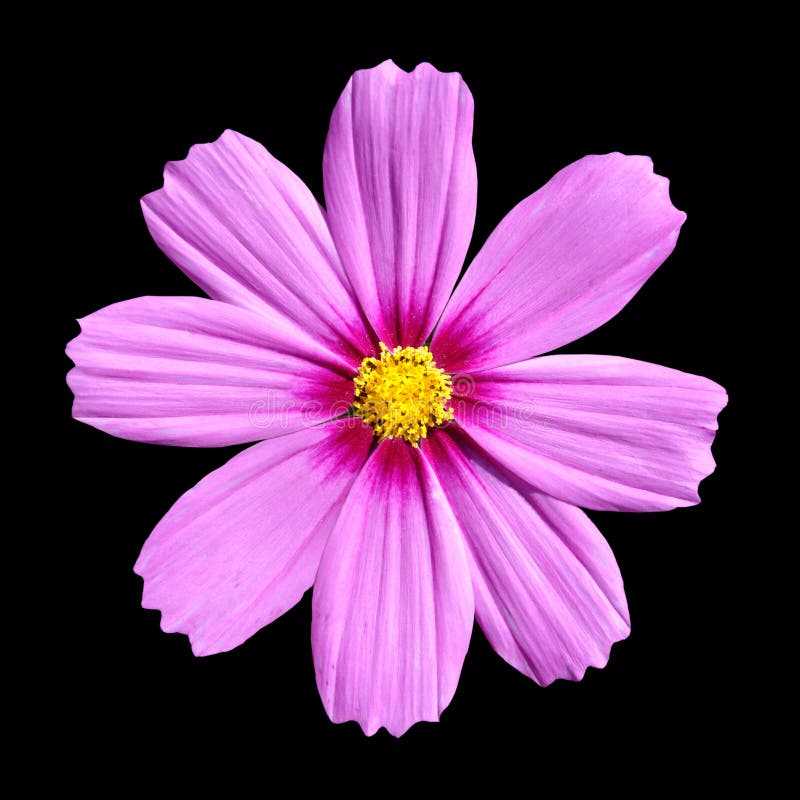
Cosmea flowers hold a special significance in the language of flowers. They symbolize love and freedom, making them the perfect choice for romantic gardens or spaces that celebrate individuality. Placing cosmea flowers in your garden can create an atmosphere of love, joy, and a free-spirited ambiance.
Easy to Grow and Care For
One of the most appealing aspects of cosmea flowers is their easy care and growth. These flowers are known for being hardy and resilient, making them an excellent choice for both beginner and experienced gardeners. They thrive in various soil types and can tolerate different weather conditions, including heat and drought. To grow cosmea flowers, simply sow the seeds in well-drained soil, water them regularly, and watch as they bloom into a breathtaking display.
Attracting Birds, Bees, and Butterflies
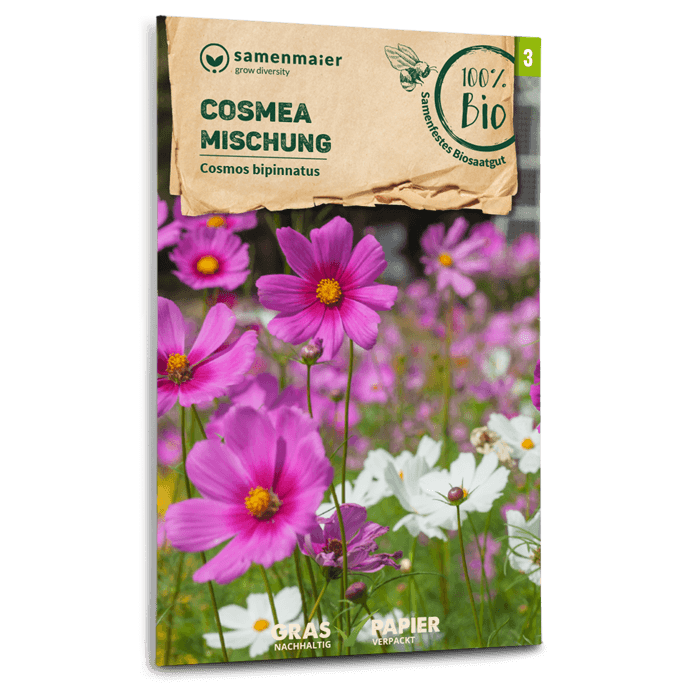
Cosmea flowers have a magnetic effect on pollinators, attracting birds, bees, and butterflies to your garden. The vibrant colors and sweet nectar of the cosmea blooms make them irresistible to these creatures, creating a lively and dynamic garden environment. By planting cosmea flowers, you can contribute to the preservation of pollinators and enjoy the beauty of their presence.
A Versatile Addition to Any Garden
Whether you have a small balcony garden, a flowerbed, or a vast landscape, cosmea flowers can be a versatile addition to any garden. Their tall and slender stems make them an excellent choice for creating vertical interest in your garden or filling empty spaces with their vibrant blooms. Moreover, cosmea flowers can be easily incorporated into floral arrangements, adding a touch of elegance and beauty to any room.
Conclusion
The enchanting world of cosmea flowers awaits your exploration. Their captivating appearance, symbolic meaning, ease of care, ability to attract pollinators, and versatile nature make them a beloved choice for gardeners and floral enthusiasts alike. By adding cosmea flowers to your garden, you can create a truly enchanting and vibrant oasis that will fill your heart with joy and admiration.
Delight in the Vibrant Colors and Unique Shapes
One of the most captivating aspects of free-loving cosmea is its wide range of vibrant colors and unique shapes. From the soft pastels to the bold and bright hues, these flowers are sure to add a pop of color to any garden or floral arrangement.
When it comes to shapes, cosmea offers a delightful variety. Some varieties have large, full blooms that resemble daisies or dahlia flowers, while others have delicate, wispy petals that create a more lacy appearance. No matter the shape, each blossom is a work of art that will leave you in awe.
A Color Palette to Suit Every Taste

If you prefer softer, more romantic colors, cosmea has you covered. With shades of blush pink, pale lavender, and creamy white, these flowers evoke a sense of tranquility and grace. They are perfect for creating a peaceful and dreamy garden oasis.
On the other end of the spectrum, there are cosmea varieties that boast an array of vibrant and energetic colors. From fiery reds and oranges to brilliant purples and magentas, these flowers demand attention and make a bold statement in any garden or bouquet.
For those who appreciate a more eclectic and unique look, cosmea also comes in mesmerizing bi-colors. These flowers feature petals with contrasting hues, creating a captivating and eye-catching display. With their unpredictable patterns, they are sure to spark conversation and intrigue.
A Garden Full of Shapes and Textures
The varied shapes of cosmea flowers add another layer of interest to their already captivating colors. The fuller blooms, with their layers of petals, create a sense of abundance and lushness. They are reminiscent of romantic English gardens and make for beautiful centerpieces in a bouquet.
On the other hand, the delicate, wispy petals of some cosmea varieties add a touch of whimsy and charm to any garden. With their airy appearance, they seem to dance in the breeze, creating a sense of movement and life. These flowers are perfect for adding a playful touch to your garden or floral arrangements.
No matter your preference, cosmea offers a wide range of shapes and textures to suit every taste. Mix and match different varieties to create a visually stunning display that will leave you and your guests mesmerized.
Conclusion
The vibrant colors and unique shapes of free-loving cosmea make it a must-have for any garden. Whether you prefer soft and romantic colors or bold and energetic hues, there is a cosmea variety that will suit your taste. The varied shapes and textures of these flowers add another layer of interest, creating a visually stunning display. Add some cosmea to your garden or floral arrangements and delight in the beauty they bring.
Experience the Fragrance of these Alluring Blooms
When you step into a garden filled with cosmea flowers, you are immediately greeted by their enchanting fragrance. The delicate and sweet scent of these blooms is known to captivate everyone who encounters them.
The fragrance of cosmea flowers can vary slightly depending on the variety. Some have a light and airy scent, reminiscent of freshly cut grass or a summer breeze. Others have a more intense and musky fragrance, with hints of citrus or vanilla. No matter the fragrance, the scent of cosmea flowers is always a delightful addition to any garden.
The alluring scent of cosmea flowers makes them a popular choice for creating scented gardens. Pair them with other fragrant flowers like lavender, jasmine, or roses, and you’ll have a garden that not only looks beautiful but also smells heavenly.
To fully experience the fragrance of cosmea flowers, it’s best to visit the garden during their blooming season, which typically starts in mid-summer and lasts until the first frost. This is when the flowers are at their peak and emit the strongest fragrance.
How to Enjoy the Fragrance of Cosmea Flowers
Here are a few ways you can enjoy the captivating fragrance of cosmea flowers:
- Take a leisurely stroll through a cosmea-filled garden and let the scent surround you.
- Cut a few cosmea flowers and place them in a vase indoors. The fragrance will fill the room, creating a pleasant and inviting atmosphere.
- Dry cosmea flowers and use them to make potpourri. The dried petals will retain their fragrance, allowing you to enjoy the scent long after the flowers have faded.
- Add cosmea flowers to homemade bath and beauty products, such as bath salts or body scrubs, to infuse them with their amazing scent.
With their captivating fragrance, cosmea flowers are truly a sensory delight. Don’t miss the opportunity to experience the enchanting aroma of these alluring blooms.
Uncover the Secrets of Growing Cosmea in Your Garden
If you’re looking to add a burst of color to your garden, cosmea is a wonderful choice. This beautiful flower is easy to grow and can thrive in various soil types and weather conditions. In this guide, we will uncover the secrets to successfully growing cosmea in your garden.
1. Choose the Right Location
Cosmea plants thrive in full sun, so it’s important to choose a location in your garden that receives at least 6-8 hours of direct sunlight each day. This will ensure that your cosmea plants receive the necessary amount of light to grow and bloom vibrantly.
2. Prepare the Soil
Before planting cosmea seeds, it’s essential to prepare the soil. Cosmea plants prefer well-draining soil, so make sure to amend your garden bed with organic matter such as compost or aged manure to improve drainage. Avoid heavy clay soils as they can cause waterlogged conditions, which can lead to root rot.
3. Sow the Seeds
Cosmea seeds can be sown directly into the garden bed once all danger of frost has passed. Make sure to space the seeds at least 4-6 inches apart to allow room for growth. Gently press the seeds into the soil, but do not cover them as they require light to germinate.
4. Watering
While cosmea plants are drought-tolerant, they still require regular watering, especially during dry periods. Water the plants deeply once a week, ensuring that the soil is evenly moist. Avoid overwatering as this can lead to root rot.
5. Fertilizing
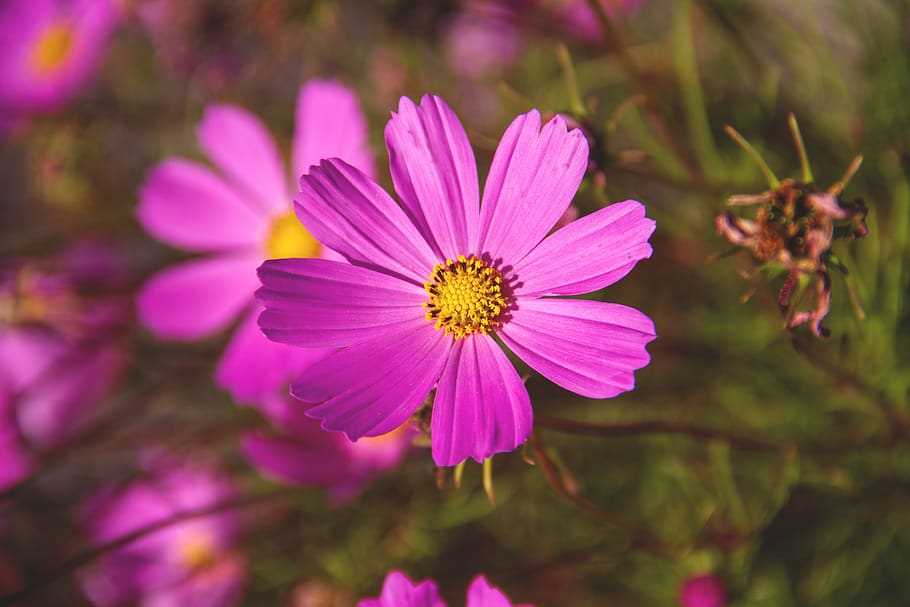
To encourage healthy growth and abundant blooms, feed your cosmea plants with a balanced fertilizer once a month during the growing season. Follow the instructions on the fertilizer packaging for the correct dosage.
6. Support and Deadheading
As your cosmea plants grow, they may need support to prevent them from flopping over. Place stakes or a trellis near the plants and gently secure the stems using twine. Additionally, regularly deadhead the faded flowers to promote continuous blooming and prevent the plants from going to seed too quickly.
7. Pests and Diseases
Cosmea plants are generally resistant to pests and diseases. However, they may occasionally encounter issues such as aphids or powdery mildew. Regularly inspect your plants for any signs of infestation or disease and take appropriate measures such as applying organic insecticides or fungicides if necessary.
By following these secrets of growing cosmea in your garden, you’ll be rewarded with a stunning display of colorful flowers that will bring beauty and joy to your outdoor space. Enjoy the process of nurturing these lovely plants and witnessing their growth and blooms!
Learn the Ideal Soil Conditions and Light Requirements
The proper soil conditions and light requirements are essential to growing healthy and vibrant cosmea plants. By understanding the ideal conditions, you can create a suitable environment for these stunning flowers to thrive in your garden. Here are some key factors to consider:
Soil Conditions
- Well-drained soil: Cosmea plants prefer well-draining soil to prevent root rot. Ensure that the soil has good drainage to avoid waterlogging, which can be detrimental to the plants.
- Neutral to slightly acidic pH: Cosmea plants thrive in soil with a neutral to slightly acidic pH level. Test the soil and make necessary amendments to adjust its pH if needed.
- Rich in organic matter: Adding organic matter, such as compost, to the soil improves its fertility and enhances moisture retention. This helps to promote healthy growth and blooming.
Light Requirements
- Full sunlight: Cosmea plants love sunlight and require at least 6-8 hours of direct sunlight each day. Make sure to choose a location in your garden that receives ample sunlight for these flowers to thrive.
- Partial shade: While cosmea plants prefer full sunlight, they can tolerate some shade during the hot afternoon hours. If your garden has a scorching afternoon sun, consider providing partial shade for the plants during the hottest part of the day.
By providing the proper soil conditions and light requirements, you can ensure that your cosmea plants grow vigorously and produce an abundance of stunning flowers. Remember to water your cosmea plants regularly and provide them with the necessary care to maintain their health and beauty.
Discover the Best Time to Plant and Harvest Cosmea
Knowing the best time to plant and harvest cosmea can help ensure a successful and abundant garden. Whether you are a seasoned gardener or a beginner, understanding the timing for these essential gardening tasks is crucial for optimal results. Below, we provide a useful guide to help you determine the right time to sow cosmea seeds and when to expect a bountiful harvest.
Planting Cosmea Seeds
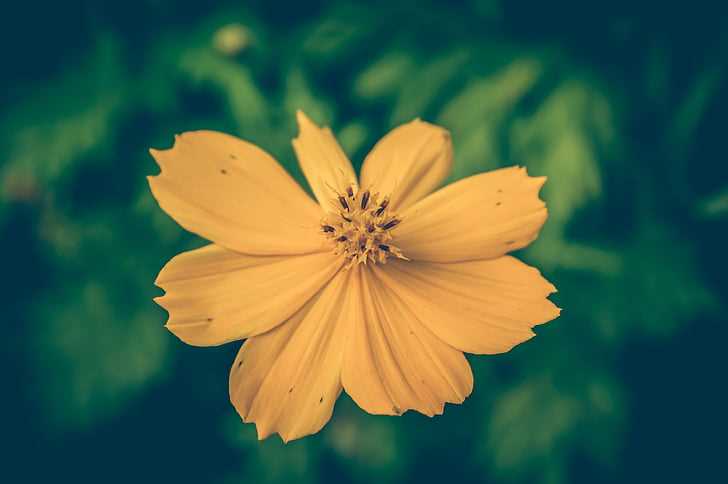
Cosmea seeds should be sown directly into the garden soil after the danger of frost has passed. These plants thrive in warm climates and require full sun to grow successfully. Therefore, the best time to plant cosmea seeds is in the late spring or early summer, depending on your region. Ensure that the soil is well-drained, as cosmea plants dislike overly wet conditions. Prepare the soil by loosening it and removing any weeds or debris before planting.
When sowing the seeds, follow the instructions provided on the packet. Typically, cosmea seeds should be planted about 1/4 inch deep and spaced 12-18 inches apart. Water the soil thoroughly after planting and keep it consistently moist until the seeds germinate, which usually takes about 7-10 days.
Harvesting Cosmea
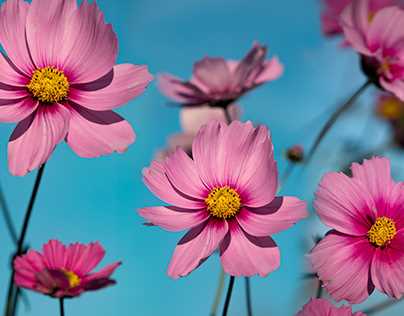
Cosmea plants typically start blooming about 80-90 days after planting the seeds. They produce beautiful, vibrant flowers that make stunning additions to floral arrangements or garden landscapes. Harvesting cosmea flowers regularly promotes new growth and extended blooming.
To harvest cosmea flowers, wait until the flowers are just beginning to open fully. Cut the stems close to the base of the plant, using sharp, clean scissors or pruning shears. It’s best to cut flowers early in the morning when they are well-hydrated. Immerse the stems immediately in a bucket of clean, cool water to keep them fresh and prevent wilting.
With proper care, cosmea plants can continue to produce flowers until the first frost of autumn arrives. Regular deadheading, removing spent flowers, can help prolong the blooming period. Enjoy the beauty of these free-loving flowers and make the most of their harvest by displaying them in vases or sharing them with friends and loved ones.
By understanding the best time to plant and harvest cosmea, you can ensure a vibrant and flourishing garden. With their vibrant colors and delicate beauty, cosmea flowers are sure to bring joy and elegance to any garden or floral arrangement.
Create a Stunning Garden with Cosmea as a Focal Point
Adding a touch of beauty to your garden is easy with the vibrant and free-loving cosmea flower. With its delicate petals and stunning colors, it can create a focal point that will wow your friends and family. Here are some tips on how to create a stunning garden using cosmea as a focal point.
Choose the Perfect Location
Before you start planting cosmea, it’s important to choose the perfect location in your garden. Cosmea thrives in full sun, so make sure to select an area that receives at least 6-8 hours of direct sunlight per day. Additionally, cosmea prefers well-draining soil, so ensure that the soil in the chosen area is loose and well-drained.
Prepare the Soil
Once you have selected the location, it’s time to prepare the soil for planting. Start by removing any weeds or rocks from the area. Then, loosen the soil with a garden fork or tiller to a depth of at least 6-8 inches. After loosening the soil, mix in some organic matter such as compost or well-rotted manure to improve drainage and provide nutrients for the plants.
Plant Cosmea Seeds
After preparing the soil, it’s time to plant the cosmea seeds. Scatter the seeds evenly on the soil surface and lightly cover them with a thin layer of soil or compost. Water the area gently to ensure that the seeds are moist but not soaked. Keep the soil consistently moist until the seeds germinate, which usually takes around 7-10 days.
Maintain and Care for Cosmea
Once the cosmea plants have germinated, it’s important to maintain and care for them to ensure their healthy growth. Water the plants regularly, providing enough water to keep the soil consistently moist, but avoid overwatering as it can lead to root rot. Additionally, apply a balanced fertilizer every 4-6 weeks to provide essential nutrients for the plants.
Deadhead the spent flowers regularly to encourage continuous blooming and remove any diseased or damaged leaves to prevent the spread of diseases. Finally, consider staking the plants or providing support as they grow taller to prevent them from bending or breaking.
Enjoy the Beautiful Blooms
With proper care and maintenance, your cosmea plants will reward you with an abundance of beautiful blooms. The stunning colors and delicate petals will create a focal point in your garden that is sure to impress. Whether you choose to plant them in beds, borders, or containers, cosmea will add a touch of beauty and elegance to any garden.
Combine Cosmea with Other Complementary Flowers
One of the best ways to enhance the beauty of your garden is by combining different flowers together. Cosmea, with its vibrant and colorful blooms, can be a great addition to any flower garden. Here are some complementary flowers that you can consider planting along with your cosmea:
- Marigolds: Marigolds come in various colors and sizes, making them a perfect companion for cosmea. Their warm hues contrast beautifully with cosmea’s cooler shades.
- Zinnias: Zinnias are known for their bright and bold blooms. Planting them alongside cosmea will create a stunning display of colors in your garden.
- Asters: Asters have daisy-like flowers that come in various shades of pink, purple, and white. They make a lovely addition to any flower arrangement and pair well with cosmea.
- Lavender: Lavender not only adds a pleasant fragrance to your garden but also complements cosmea with its delicate purple flowers. It brings a touch of elegance and tranquility to any flower bed.
To create a visually pleasing garden, you can create different combinations using these flowers. Consider planting them in clusters or mixing them together in a flower bed for a diverse and eye-catching display.
Remember to choose flowers that have similar sunlight and watering requirements to ensure they thrive together. Also, pay attention to the height and growth habits of each flower, as some may overshadow or inhibit the growth of others.
By combining cosmea with other complementary flowers, you can create a stunning garden that is both visually appealing and attracts various pollinators, such as bees and butterflies. Experiment with different combinations and let your creativity bloom!
Use Cosmea as a Border or Filler for a Prettier Landscape
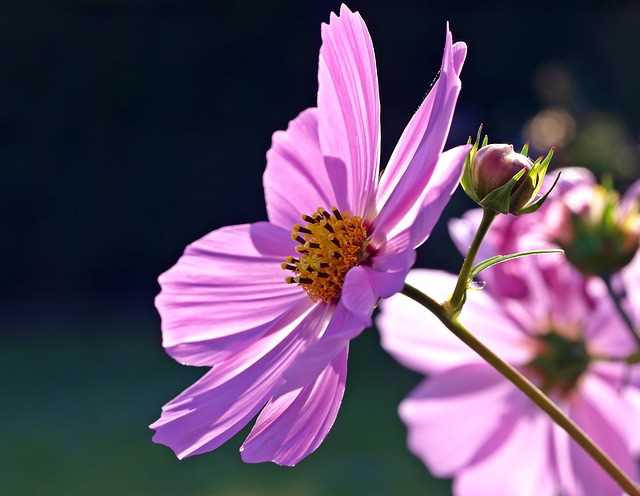
Cosmea, also known as cosmos, is a versatile and beautiful flower that can be used in various ways to enhance the aesthetics of your landscape. Whether you want to create a charming border or fill in empty spaces, cosmea is an ideal choice due to its vibrant colors and easy maintenance.
Creating a Border with Cosmea
If you’re looking to add a pop of color and definition to your garden beds or pathways, cosmea can be used as a border plant. Its tall and upright growth habit, combined with its colorful blooms, creates an eye-catching edge that adds visual interest to your landscape.
To create a cosmea border, start by preparing the soil in the desired area. Cosmea prefers well-drained soil, so make sure the soil is loose and fertile. Dig a narrow trench along the edge of your garden bed or pathway, about 8-12 inches deep. This trench will act as a containment area for the cosmea plants.
Next, plant the cosmea seedlings or seeds in the trench, spacing them about 6-12 inches apart. Gently fill the trench with soil, ensuring that the plants are securely positioned. Water the newly planted cosmeas thoroughly.
As the cosmea plants grow, they will create a beautiful border with their tall stems and colorful flowers. It’s best to deadhead the spent blooms regularly to encourage continuous blooming throughout the season.
Using Cosmea as a Filler
Another way to incorporate cosmea into your landscape is by using it as a filler plant. Its feathery foliage and delicate flowers make it a great candidate to fill in empty spaces between other plants or to add volume to a flower bed.
To use cosmea as a filler, simply plant it in the desired areas where you want to add more color and texture. Cosmea’s airy growth habit allows it to blend seamlessly with other plants and fill in gaps, creating a fuller and more visually appealing landscape.
Be sure to provide adequate spacing between cosmea plants to allow for proper air circulation and growth. Water regularly and provide a layer of mulch to help conserve moisture and control weeds.
With its versatility and beauty, cosmea can transform your landscape into a stunning display of colors. Whether used as a border or filler, this free-loving flower is sure to add charm and elegance to your outdoor space.
Questions and Answers:
What is cosmea?
Cosmea is a beautiful flowering plant that belongs to the sunflower family. It is known for its delicate and colorful flowers that bloom in various shades of pink, white, and purple.
Where can I find cosmea?
Cosmea can be found in many gardens and parks around the world. It is a popular choice among gardeners due to its easy care and beautiful blooms. You can also grow cosmea in your own garden, as it requires minimal maintenance.
How do I grow cosmea?
Growing cosmea is quite easy. You can start by planting the seeds in a well-drained soil in a sunny spot. Water the plant regularly, but make sure not to overwater it. Cosmea can tolerate a wide range of soil conditions and can even thrive in poor soil. Additionally, deadheading the flowers will encourage more blooms.
When does cosmea bloom?
Cosmea usually blooms from mid-summer to early autumn. The flowers are long-lasting and can continue blooming for several weeks. Deadheading the flowers will help prolong the blooming period.
Can cosmea attract pollinators?
Yes, cosmea is a great attractor of pollinators such as bees and butterflies. The bright and colorful flowers of cosmea are rich in nectar and pollen, making them a popular food source for these beneficial insects.
Are there different varieties of cosmea?
Yes, there are several different varieties of cosmea available. Some popular ones include the Sensation series, which features tall plants with large flowers, and the Early Sensation series, which is known for its early blooming time. There are also dwarf varieties available, which are perfect for smaller gardens or containers.
Can I use cosmea as a cut flower?
Yes, cosmea flowers make excellent cut flowers. They have long stems and can last for several days in a vase. To ensure the longest possible vase life, it is recommended to cut the flowers when they are still in bud and place them in a vase with fresh water.







